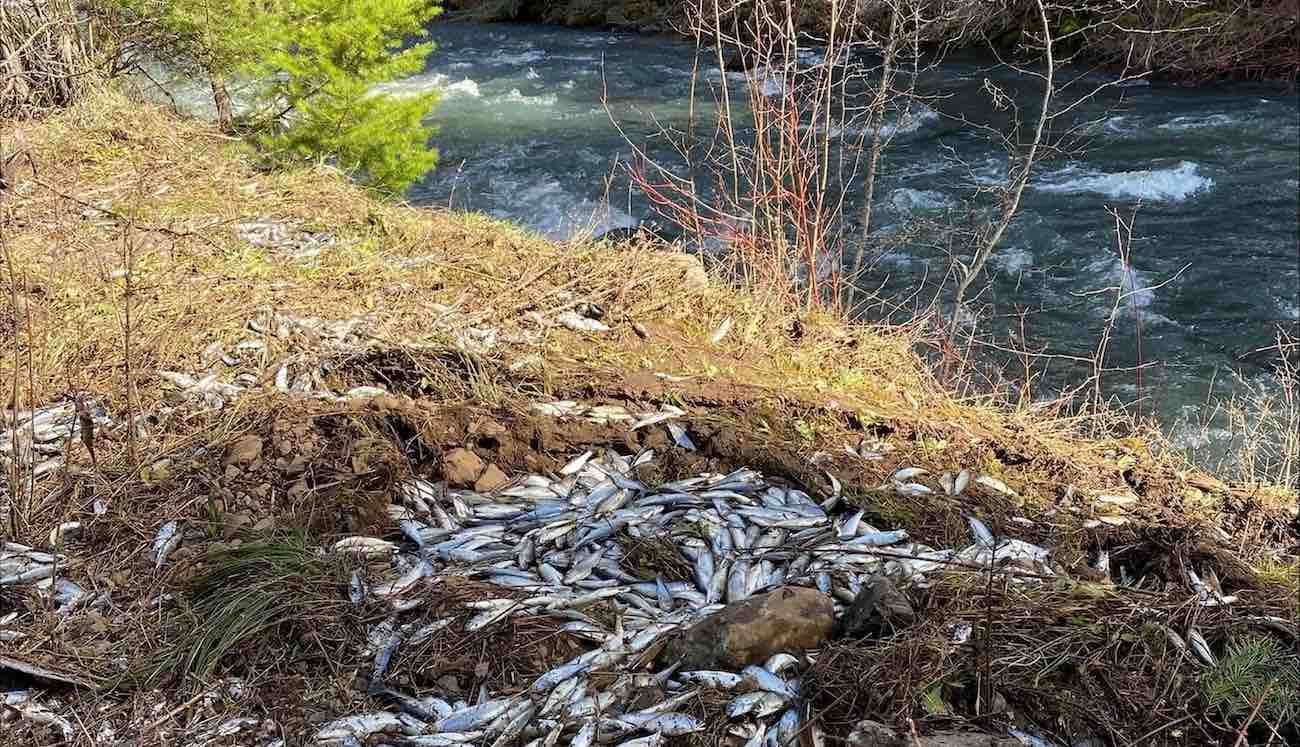Biologist Unveils Stunning Blue Gecko, Dubs the Discovery 'Vangoghgi'
Cnemapsis vangoghi was found during one such exploration, after the flash of indigo and mustard yellow which caught Agarawl's eye.

Tragedy struck as a truck carrying 102,000 young salmon to an Oregon hatchery overturned, causing the massive fish tank to rupture.
Fortunately, luck favored the juvenile fish, as nearly all of them were swept out of the tank by the rushing water and into Lookingglass Creek, the watercourse leading to the intended hatchery.
Departing from a local hatchery in Elgin, Oregon, the driver, laden with 80,000 pounds of salmon and water, aimed for the Imnaha River near Lookingglass Hatchery in Northeast Oregon. However, dew on the roads caused the driver to skid around a sharp curve, causing the water-filled container to tip over and slide down a rocky embankment.
This incident marked one of the worst disasters in the program's history since its inception in 1982. The program involves transporting young salmon, known as "smolts," from river hatcheries downstream to hatcheries situated far upstream, obstructed by dams.
While 24,000 smolts couldn't make their way to the river, 77,000 successfully reached it.
Usually, the smolts are transported to river hatcheries shortly before embarking on their journey to the Pacific Ocean.
Upon reaching the Imnaha River, they were supposed to acclimate for a few days before embarking on their 650-mile journey through the Snake and Columbia Rivers to the Pacific Ocean.
"They hitch a ride on the spring runoff, tail first, so there is less resistance, allowing them to conserve energy until they reach the ocean," explained Andrew Gibbs, the Oregon Department of Fish and Wildlife's fish hatchery coordinator for eastern Oregon, in an interview.
Even though they weren't born there, spending just a few days in the constructed pool in the Imnaha River enables them to remember the route back from the ocean, using a type of reserve scent signal.
By dispersing smolts in various rivers, creeks, and tributaries, the state ensures that salmon navigate back upstream, passing through diverse communities, both human and animal, that depend on them for sustenance, commerce, and recreation.
"They kind of smell their way back," Gibbs remarked. "It's an incredible life history."
SHARE This Stroke of Luck from Oregon with Your Friends.
Be the first to comment